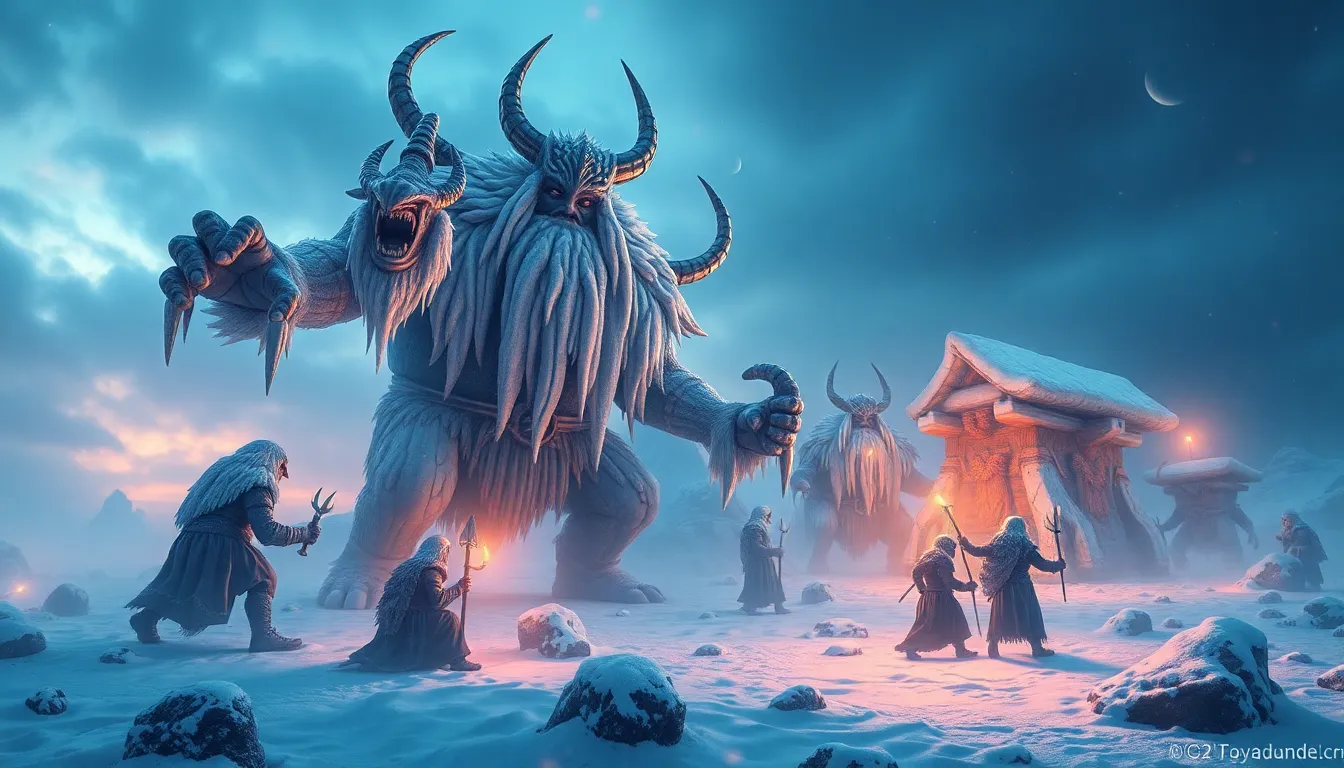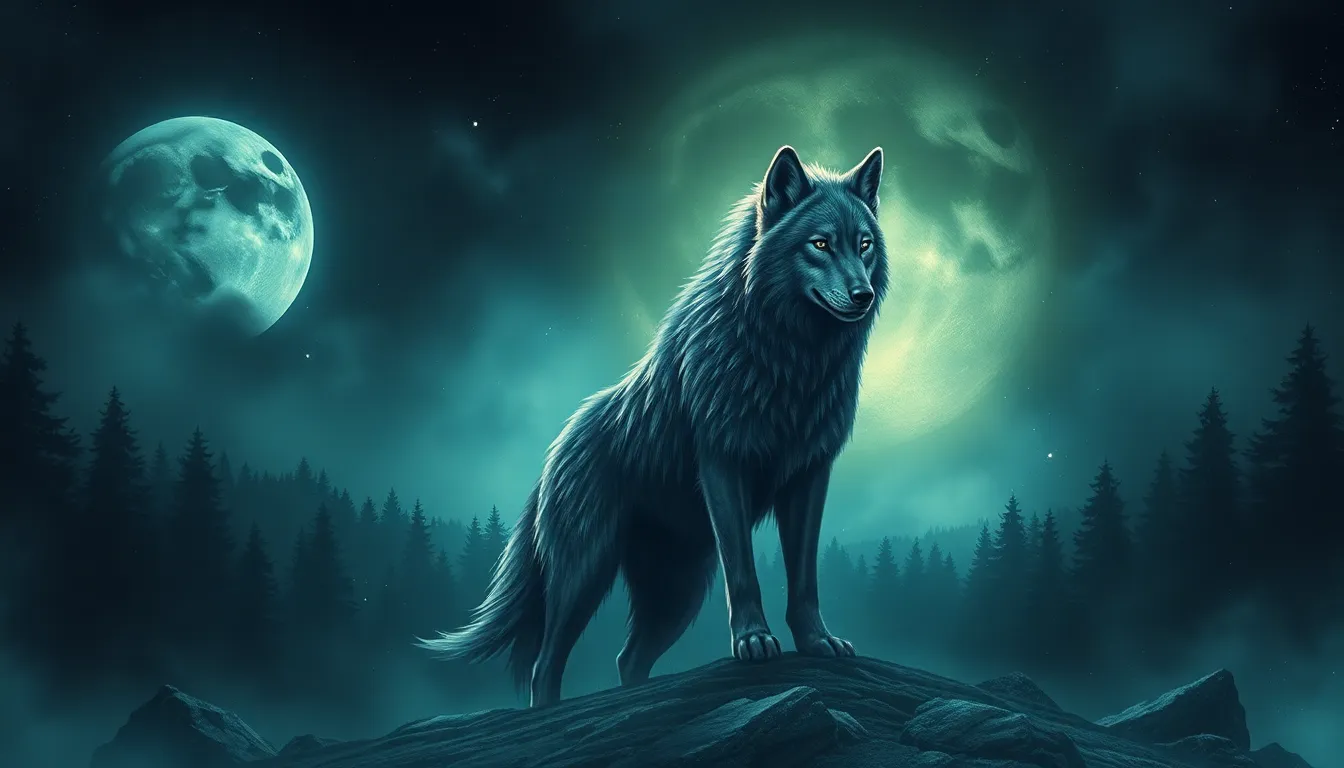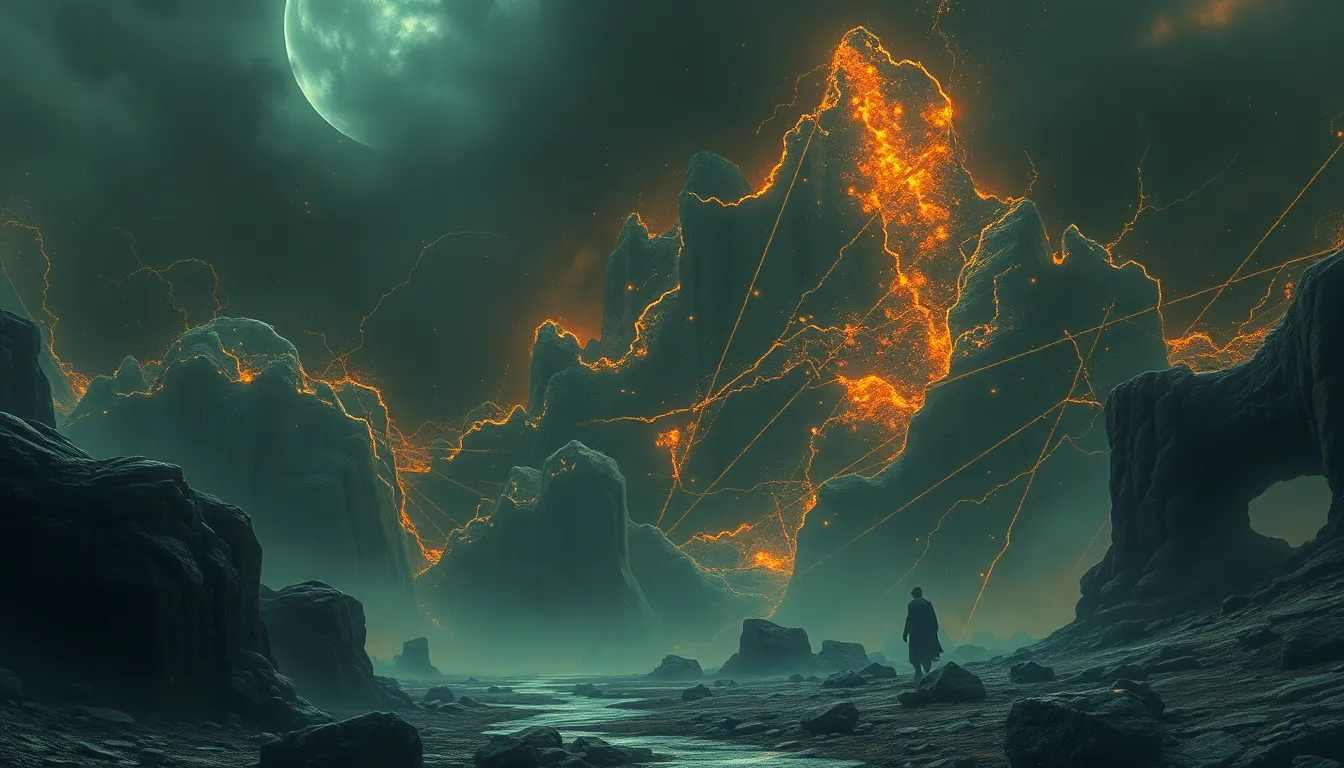The Kingdom of the Frost Giants: Norse Myths Explored
I. Introduction to Norse Mythology
Norse mythology is a rich tapestry of stories and legends that form the basis of ancient Scandinavian beliefs. It encompasses a wide array of deities, creatures, and realms, each contributing to the understanding of existence, life, and death. The significance of Norse mythology extends beyond mere storytelling; it reflects the values, fears, and aspirations of the Norse people.
Key themes in Norse myths include the struggle between order and chaos, the inevitability of fate, and the interplay between gods and humans. Among the diverse beings that populate these tales, the Frost Giants, known as the Jotnar, stand out as formidable and often antagonistic figures, embodying the chaotic forces of nature.
II. The Origins of the Frost Giants
The origins of the Frost Giants are deeply rooted in Norse creation myths. Central to these stories is Ymir, the primordial giant whose body gave rise to the world. According to the myths, Ymir was born from the melting ice of Niflheim, the realm of ice, and was nourished by the milk of a cow named Audhumla. From Ymir, the Frost Giants emerged, forming a race that would play a crucial role in the mythology of the North.
The creation myth highlights the dual forces of existence: the primordial ice of Niflheim and the fiery realm of Muspelheim. Their interaction created the conditions for life, leading to the birth of Ymir and the Frost Giants. This duality is significant, illustrating the balance between creation and destruction.
The Frost Giants are often contrasted with the Aesir and Vanir, two groups of gods in Norse mythology. While the Aesir represent order and civilization, the Frost Giants embody chaos and the untamed aspects of nature, establishing a dynamic relationship between these two factions.
III. Characteristics and Culture of the Frost Giants
The Frost Giants are characterized by their immense size and strength, often depicted as towering figures with ice-blue skin and features that resemble the harsh landscapes of Jotunheim, their homeland. They possess various abilities, including shapeshifting and manipulation of ice and snow, making them formidable opponents to the gods.
Within Jotunheim, the Frost Giants have a complex social structure. While they are often portrayed as savage and brutish, they have their own hierarchy, with powerful leaders like Ymir and Thrym. Their society is marked by a deep connection to nature, with customs that reflect their environment and the harsh realities of their world.
- Physical Attributes: Towering stature, ice-blue skin, and formidable strength.
- Social Hierarchy: Structured with powerful leaders and clans.
- Beliefs: A profound connection to nature and the primal forces of the universe.
IV. Key Figures Among the Frost Giants
Several key figures stand out among the Frost Giants, each contributing uniquely to the tapestry of Norse mythology.
- Ymir: The progenitor of the Frost Giants, whose body was used to create the world. His death marked the end of the primordial chaos.
- Laufey: Mother of Loki, her role highlights the interconnectedness of the giants and gods, as Loki often embodies the traits of both.
- Skadi: A huntress and goddess associated with winter, she represents the Frost Giants’ connection to the natural world.
- Thrym: A giant known for stealing Thor’s hammer, showcasing the antagonistic relationship between gods and giants.
V. The Kingdom of Jotunheim
Jotunheim, the realm of the Frost Giants, is depicted as a harsh and icy landscape, contrasting sharply with the lush fields of Asgard and Midgard. It is a rugged territory filled with mountains, glaciers, and dark forests, embodying the chaotic beauty of nature.
The significance of Jotunheim in Norse cosmology cannot be overstated. It serves as a counterbalance to the orderly realms of the gods, representing the untamed forces that challenge divine authority. Jotunheim’s existence emphasizes the duality of the universe, where creation and destruction coexist.
In comparison to other realms:
- Asgard: The realm of the gods, symbolizing order and civilization.
- Midgard: The world of humans, a middle ground between the divine and the chaotic.
VI. Interactions Between the Gods and Frost Giants
The interactions between the Aesir and the Frost Giants are marked by both conflict and cooperation. The Aesir-Vanir war is a significant event that features battles against the Frost Giants, highlighting the perpetual struggle between order and chaos.
Notably, Loki’s complex relationship with the Frost Giants adds depth to their interactions. As a figure who embodies traits from both sides, Loki’s escapades often lead to significant events in Norse mythology, such as the theft of Thor’s hammer by Thrym.
Despite the conflicts, there are instances of cooperation, where gods and giants engage in alliances to achieve common goals, illustrating the nuanced dynamics of their relationships.
VII. The Frost Giants in Popular Culture
The representation of Frost Giants has evolved in modern literature and media, notably in Marvel Comics, where they are depicted as antagonistic forces against heroes like Thor. This portrayal has contributed to a broader understanding and interest in Norse mythology.
In addition, the influence of Frost Giants on the fantasy genre is evident, inspiring character archetypes and narratives that explore themes of chaos, nature, and the supernatural.
The resurgence of interest in Norse mythology in contemporary society reflects a growing fascination with ancient stories and their relevance to modern life.
VIII. Symbolism of the Frost Giants
The Frost Giants symbolize chaos and the unpredictable forces of nature. In their narratives, they represent the duality of creation and destruction, embodying the raw power of the natural world.
Through their stories, we glean lessons about the balance of existence, the importance of respecting nature, and the inevitability of fate. The Frost Giants serve as a reminder of the consequences of unchecked chaos and the need for balance in our lives.
IX. Legacy of the Frost Giants in Norse Mythology
The legacy of the Frost Giants endures in Scandinavian folklore and culture, influencing tales and traditions that resonate with the themes of Norse mythology. Their stories contribute significantly to our understanding of the complexities of existence, the interplay of forces in the universe, and the human condition.
As we explore these ancient myths, the Frost Giants remind us of the intricate relationships between chaos and order, nature and civilization, ensuring their place in the literary and cultural landscape for generations to come.



